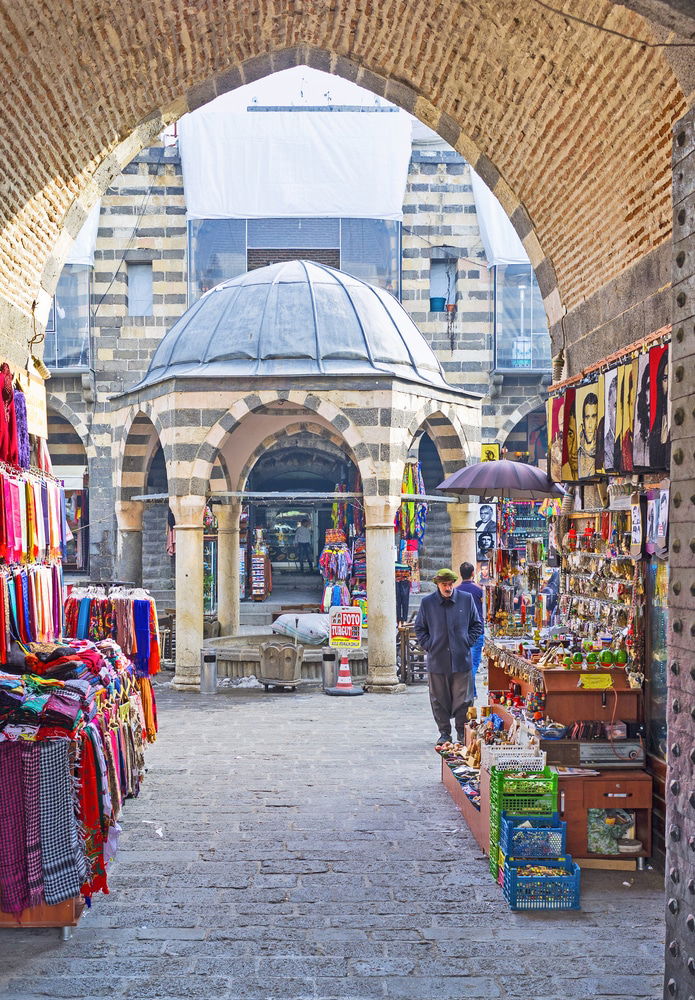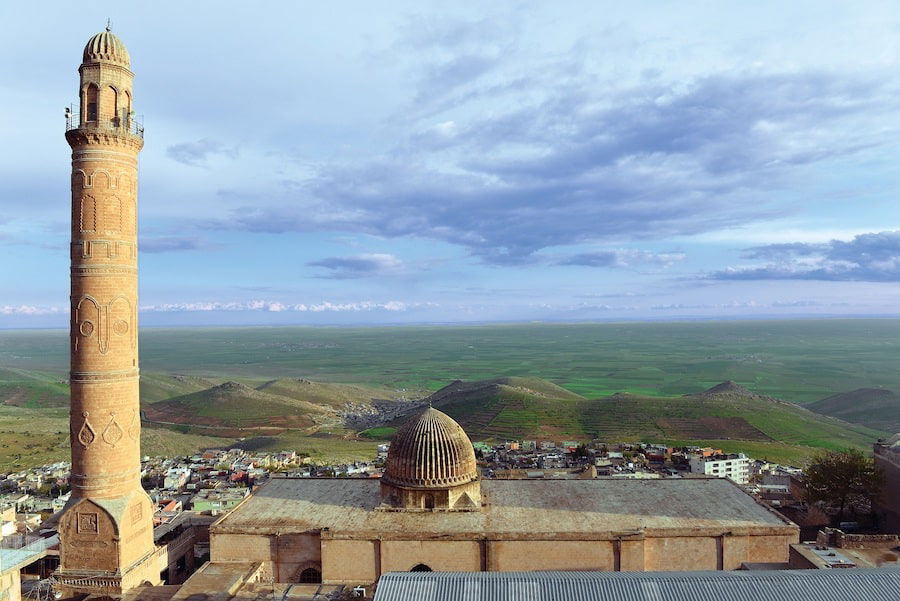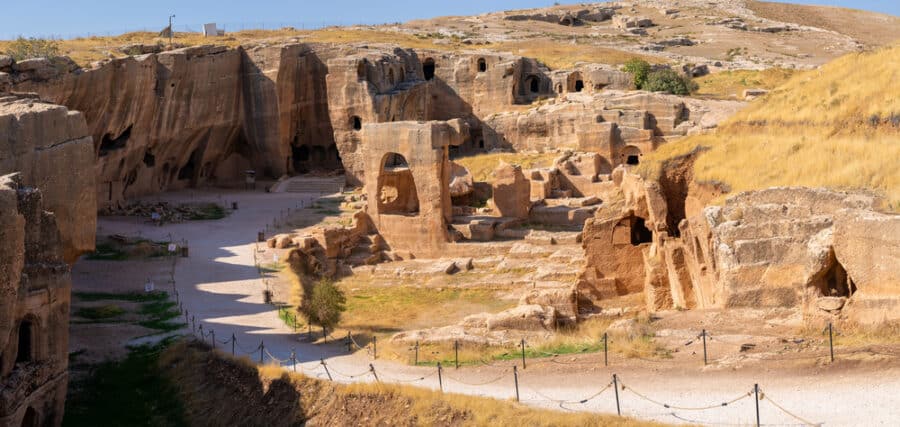When you think of Turkiye, you probably automatically think of Istanbul and the beach resorts on the south coast. You might even think about the Black Sea coast. Now, believe me, these are all fantastic places to go, and I urge you to explore them. But there’s more.
Turkiye’s southeast region is a true melting pot of culture, gastronomy, and history. Not visiting this fantastic area is like missing out in the biggest way. The biggest city in the region is Diyarbakir. So, let’s explore this amazing city in detail!

Skip Ahead To My Advice Here!
Where Is Diyarbakir
Diyarbakir is a historically rich city in southeastern Turkey. It is the capital of the Diyarbakir Province and is situated on the banks of the Tigris River.
The city is approximately 80 kilometers (50 miles) north of the border with Iraq and about 250 kilometers (155 miles) east of Gaziantep.
Best Things To Do In Diyarbakir – Attractions In Diyarbakir
Diyarbakir, one of Turkey’s oldest cities, is often described as the “city of black stones” due to its distinctive basalt architecture. This ancient city offers a range of fascinating experiences. Whether you’re a history buff, a nature lover, or an adventurer seeking local flavors, Diyarbakir has something for everyone.
Historic City Walls Around Diyarbakir
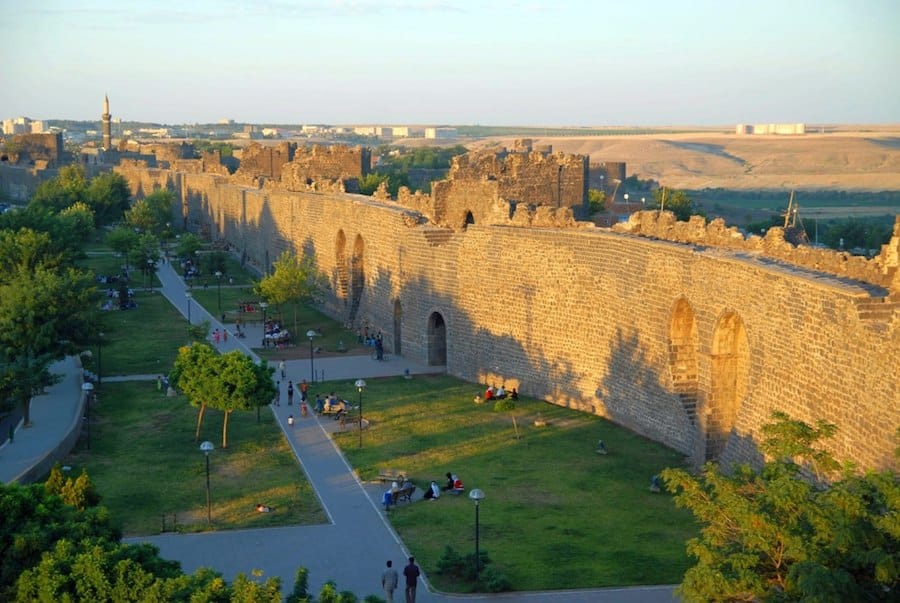
One of Diyarbakir’s most iconic features is its massive city walls, which stretch over 5.5 kilometers. These walls are some of the longest and best-preserved defensive walls in the world. This UNESCO World Heritage site is dotted with towers and gates, giving visitors a glimpse into the city’s past.
A walk along the walls offers stunning views of the surrounding landscape and the Tigris River. You can also explore notable gates such as the Mardin Gate and the Urfa Gate, each with its unique historical significance.
Ulu Camii Mosque (Great Mosque)
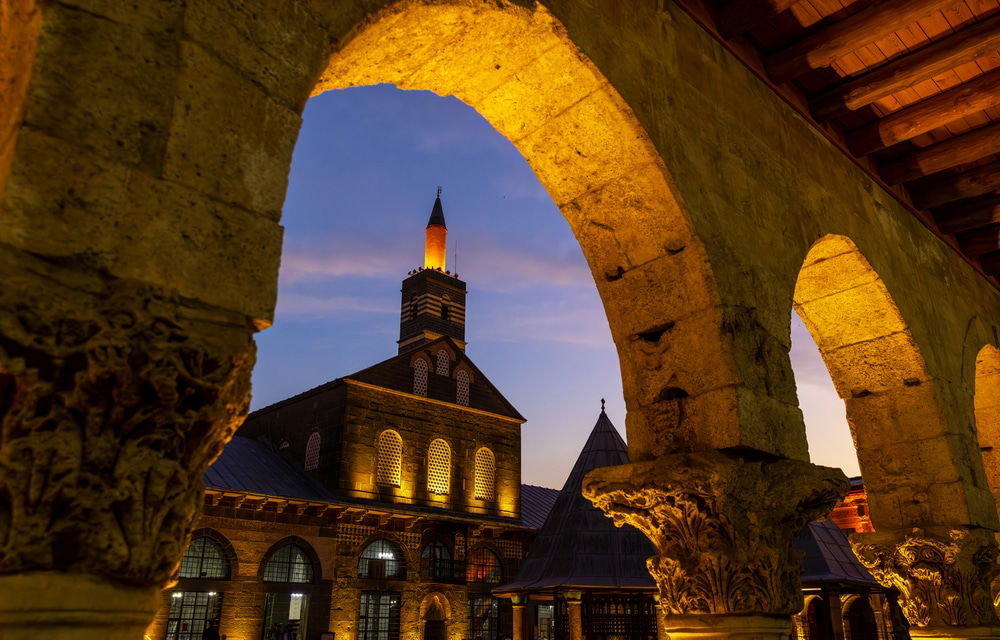
The Ulu Mosque is a remarkable blend of Islamic and Roman architecture dating back to the 11th century. Built on the site of an ancient church, it boasts impressive minarets and intricate stone carvings. The tranquil courtyard and prayer hall are also worth admiring.
The Ulu Mosque’s historic significance makes it a must-visit for anyone interested in Diyarbakir’s religious heritage. However, please remember mosque etiquette at all times.
Cahit Sıtkı Tarancı House
This museum is dedicated to the life and works of one of Turkey’s most beloved poets, Cahit Sıtkı Tarancı. Housed in a beautifully restored traditional stone mansion, the museum provides insight into the poet’s life and showcases his personal belongings, manuscripts, and photographs.
The charming garden surrounding the house is a lovely place to relax and reflect on Turkey’s poetic heritage.
Diyarbakir Archaeological Museum
The Diyarbakir Archaeological Museum presents an extensive collection of artifacts from the region’s long history, which dates back to the Paleolithic age. With exhibitions displaying everything from prehistoric tools to Roman sculptures, the museum is an enlightening experience for history enthusiasts.
Don’t miss the opportunity to see the stunning ancient mosaics and coins that speak volumes about the area’s rich cultural legacy.
On The Trail Of The Hevsel Gardens
A UNESCO World Heritage site, the Hevsel Gardens are an agricultural treasure that lies adjacent to Diyarbakir’s historic walls. These fertile gardens have been cultivated for centuries and play a vital role in the local ecosystem.
You can leisurely stroll through the gardens, enjoy the lush greenery, and taste local produce or snacks from nearby vendors. The view of the city walls from the gardens is also a sight to behold, especially at sunset.
Sur District: The Heart Of Diyarbakir’s Culture
The Sur District is where you’ll find the soul of Diyarbakir, full of narrow streets, historic mosques, and vibrant bazaars. A visit to Sur is an assault on the senses in the best way possible, where the aroma of spices fills the air, and traditional artisans showcase their crafts.
Be sure to explore the various bazaars, where you can pick up handmade carpets, kilims, and other unique souvenirs to take home. The local cafés and eateries in the district also serve up mouthwatering cuisine, perfect for refueling after a day of exploration.
Art And Street Murals
Diyarbakir’s streets are adorned with colorful murals that reflect the city’s rich artistic culture and contemporary concerns. As part of a revitalization project, local and international artists have transformed urban spaces into open-air galleries.
Take a leisurely stroll through the streets, especially around the Sur district, to enjoy this impressive street art, which often portrays the local culture, social issues, and local legends.
Historical Churches And Monasteries
Diyarbakir is also a city of religious diversity, featuring stunning churches and monasteries such as the Saint George Church and the ancient Mor Gabriel Monastery, often regarded as the oldest surviving Syriac Orthodox monastery in the world. Both sites showcase breathtaking architecture and offer insight into the region’s Christian heritage.
A visit to these sacred places is an enriching experience that highlights the coalescence of faiths in this historical city.
Visit To The City Of Islam’s Ancient Ruins: Hasankeyf
Just a short drive from Diyarbakir, the ancient city of Hasankeyf sits on the banks of the Tigris River and is a monument of civilization’s long history. Known for its rock-cut tombs, medieval bridge, and ruins of ancient structures, Hasankeyf is a captivating destination for those intrigued by history. The town is also a perfect spot for leisurely walks along the river, where you can experience the natural beauty of the area.
While visiting, consider taking a guided tour to appreciate the rich history of this ancient site fully.
Hasan Pasha Hanı
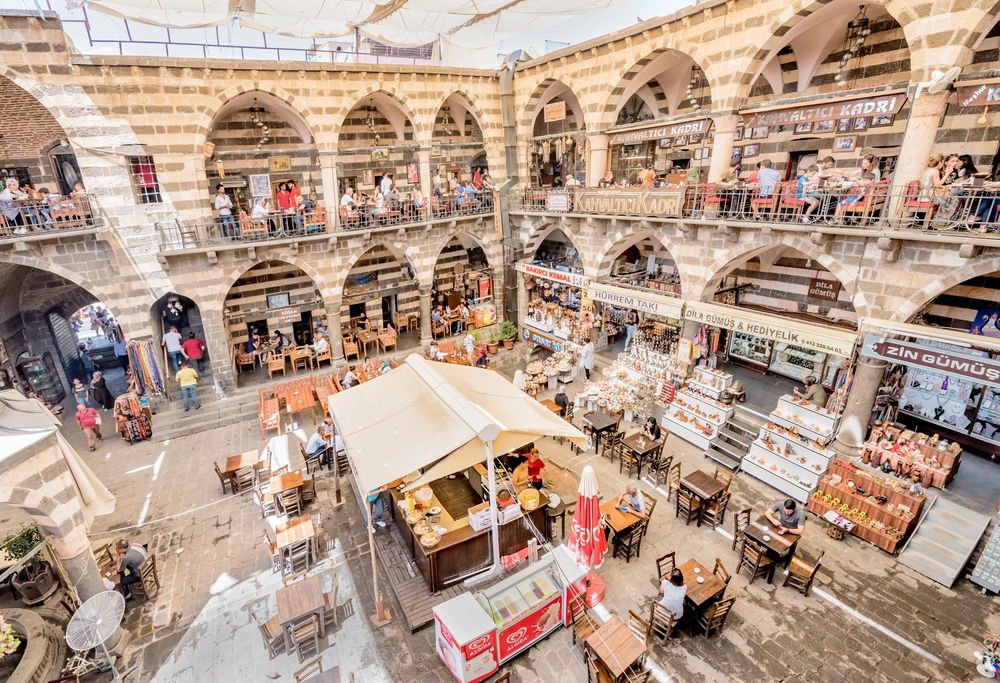
Hasan Pasha Hanı is one of Diyarbakir’s most charming historical sites, located in the bustling Sur District near the Ulu Mosque. Built in the late 16th century by the Ottoman governor Hasan Pasha, this well-preserved caravanserai served as a vital hub for traders and travelers during the Ottoman era. The two-story structure, centered around a large courtyard, is a fine example of traditional Ottoman architecture.
Today, the han has been revitalized with vibrant cafés, teahouses, and shops where you can enjoy a cup of Turkish tea, browse local crafts, or soak in the historical ambiance. A visit to Hasan Pasha Hanı offers a unique glimpse into Diyarbakir’s rich commercial history and its enduring cultural traditions.
Experience Local Festivals
Diyarbakir is known for its vibrant festivals that reflect the city’s cultural heritage and community spirit. If your visit coincides with one of these events, be sure to participate.
The “Diyarbakir Culture and Art Festival” showcases local dance, music, and arts, providing a perfect opportunity to immerse yourself in the culture. The “Newroz Festival,” celebrating the Kurdish New Year in March, is another lively event filled with traditional music, dance, and food.
Festivals provide an excellent window into local traditions and the inherent hospitality of Diyarbakir’s residents.
Ten-Eyed Bridge (Ongozlu Bridge)
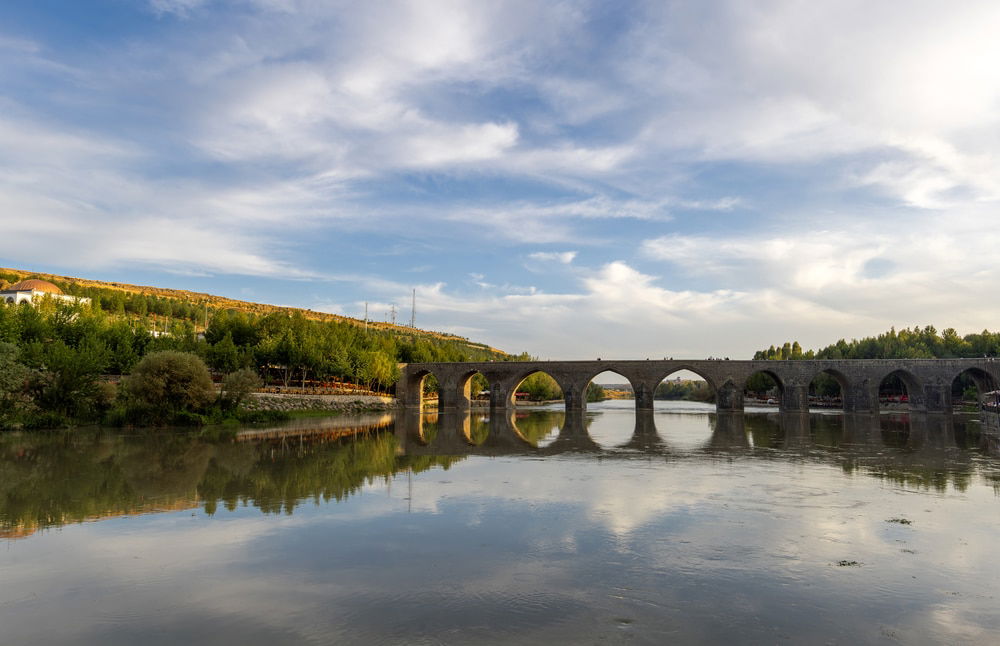
The Ten-Eyed Bridge, also known as Ongozlu Bridge, is one of Diyarbakir’s most recognizable landmarks. Built in 1065, this stone bridge spans the Tigris River and gets its name from its ten arches, which are a striking feature. The bridge is not just a piece of history but a popular spot where locals and visitors alike come to enjoy the views of the river.
Strolling across the bridge offers a sense of stepping back in time, with the ancient stonework underfoot and the flowing Tigris below. On either side of the bridge, you’ll find a cluster of cafes and tea houses, making it a perfect spot to relax with a cup of Turkish tea while soaking in the scenery.
Whether you’re into photography or just want a quiet place to unwind, Ongozlu Bridge offers a unique slice of Diyarbakir’s rich history and culture.
Zerzevan Castle
For those interested in history, a visit to Zerzevan Castle is a must. Located about 40 kilometers south of Diyarbakir, this ancient Roman fortress once stood as a crucial military outpost on the eastern frontier of the Roman Empire.
Perched on a hilltop, the castle offers panoramic views of the surrounding plains, making the trip there as visually rewarding as it is historically fascinating.
Zerzevan Castle dates back to the 4th century and includes remnants of a temple dedicated to Mithras, an ancient god worshipped by Roman soldiers. Exploring the ruins gives a glimpse into the strategic importance of this site during the Roman era. The castle is well-preserved, and walking through its remains, you can imagine the lives of the soldiers who once guarded the empire’s edge. If you’re into ancient history or just looking for a day trip from Diyarbakir, Zerzevan Castle is well worth the visit.
Virgin Mary Church
Diyarbakir is a city known for its rich religious diversity, and the Virgin Mary Church is a testament to this heritage. This Syriac Orthodox Church believed to date back to the 3rd century, is one of the oldest continuously operating churches in the world. Located in the old part of the city, the church is a significant site for the local Christian community and an important piece of the city’s history.
Visiting the Virgin Mary Church offers a quiet and reflective experience, away from the busier tourist spots.
The church’s architecture, with its ancient stone walls and peaceful courtyard, tells the story of a community that has survived through centuries of change. For those interested in religious history or looking to understand the diverse cultural fabric of Diyarbakir, the Virgin Mary Church is a must-see.
The Tigris River
The Tigris River, which flows through Diyarbakir, adds to the natural beauty of the city. Enjoy a peaceful stroll along the riverbank or take a boat tour for a leisurely afternoon.
The riverside cafes provide an ideal setting for sipping Turkish tea and enjoying the view. Fishing enthusiasts can also find spots along the Tigris, with local fishermen often eager to share tales of their catches.
Outdoor Adventures In The Surrounding Nature
Nature lovers will appreciate the stunning landscapes surrounding Diyarbakir. The region is home to an array of outdoor activities, including hiking, cycling, and exploring natural parks. Consider a day trip to nearby mountains, where you can hike lush trails and take in panoramic views of the landscape.
Exploring these areas also provides opportunities for birdwatching and experiencing the diverse flora and fauna.
Brands We Use And Trust
Best Foods To Try In Diyarbakir
One of the best things about the southeastern region as a whole is the food. When visiting, there are several traditional dishes you can’t miss!
Dolma
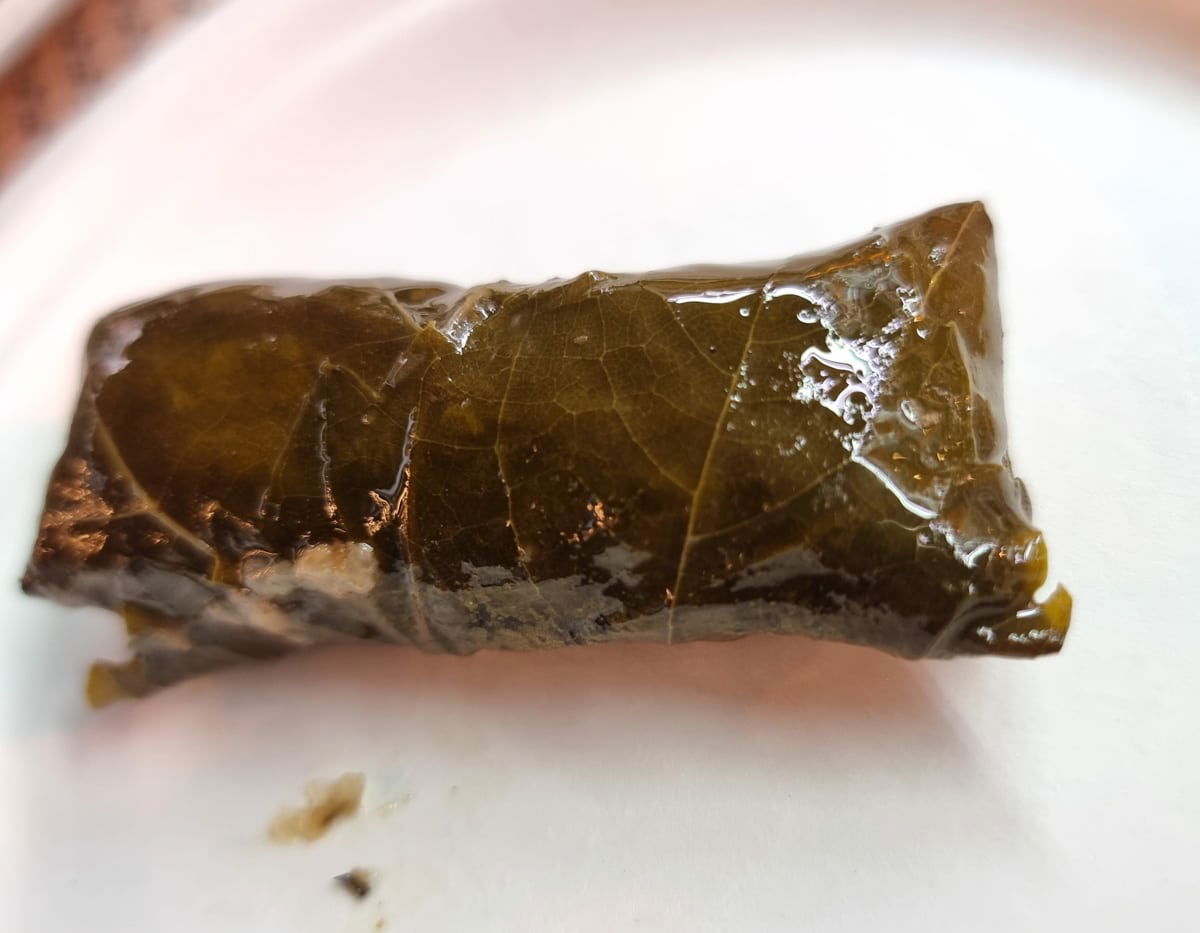
In Diyarbakir, dolmas filled with spiced rice, meat, and sometimes vegetables stand out. These stuffed grape leaves are a staple at family gatherings and offer a taste of the region’s rich agricultural produce.
Çiğ Köfte

This is a unique delicacy made from raw bulgur, finely chopped vegetables, and a blend of spices. Traditionally, it was made with raw meat, but now vegetarian versions are popular. Rolled in lettuce leaves and enjoyed fresh, it’s a refreshing and spicy dish.
Meftune
A hearty stew featuring lamb or beef cooked with a variety of vegetables, meftune is a comfort food that showcases the local flavors of the region. Often enhanced with spices like cinnamon and allspice, this dish is hearty and wholesome.
Kibbeh

A beloved dish across the Middle East, Kibbeh in Diyarbakir has its twist. Typically made of bulgur, minced onions, and finely ground meat, they are shaped into balls or patties and can be served raw, fried, or baked. Enjoy with a side of yogurt for a refreshing contrast!
Diyarbakir Kebab
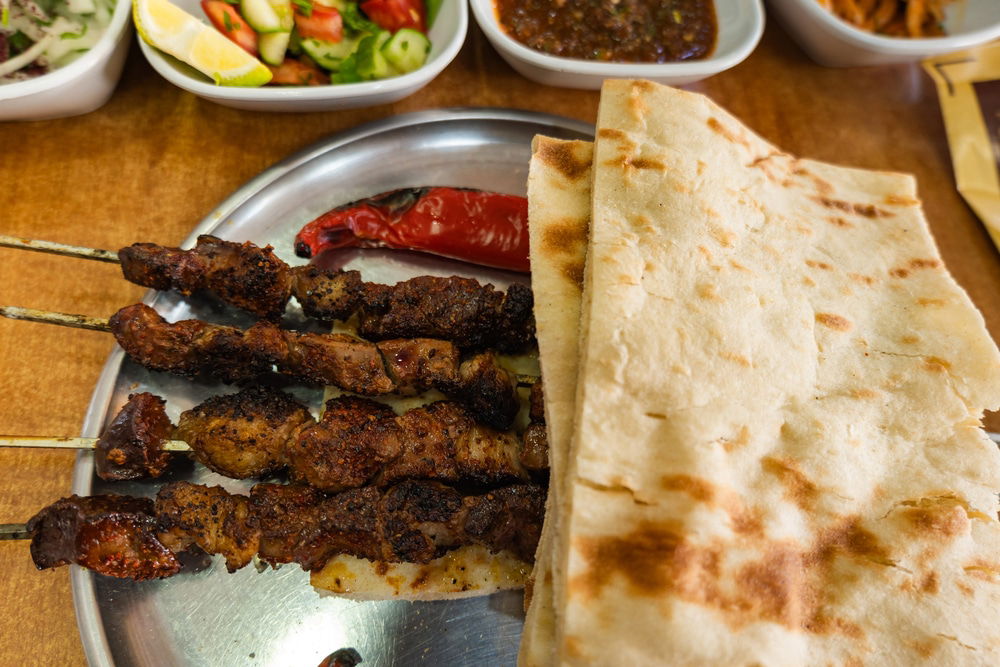
This is perhaps the most iconic dish of the area. Made from marinated chunks of lamb or beef that are skewered and grilled to perfection, Diyarbakir kebab is known for its juicy texture and smoky flavor. Often served with a side of rice, fresh vegetables, and a tangy yogurt sauce, it’s a must-try for meat lovers.
İçli Köfte
İçli köfte, or stuffed meatballs, are a beloved dish in Diyarbakir. Made from bulgur and filled with a mixture of ground meat, nuts, and spices, these delectable dumplings can be boiled, baked, or fried. They offer a satisfying blend of textures and flavors and are often enjoyed as a hearty snack or part of a meal.
Lahmacun
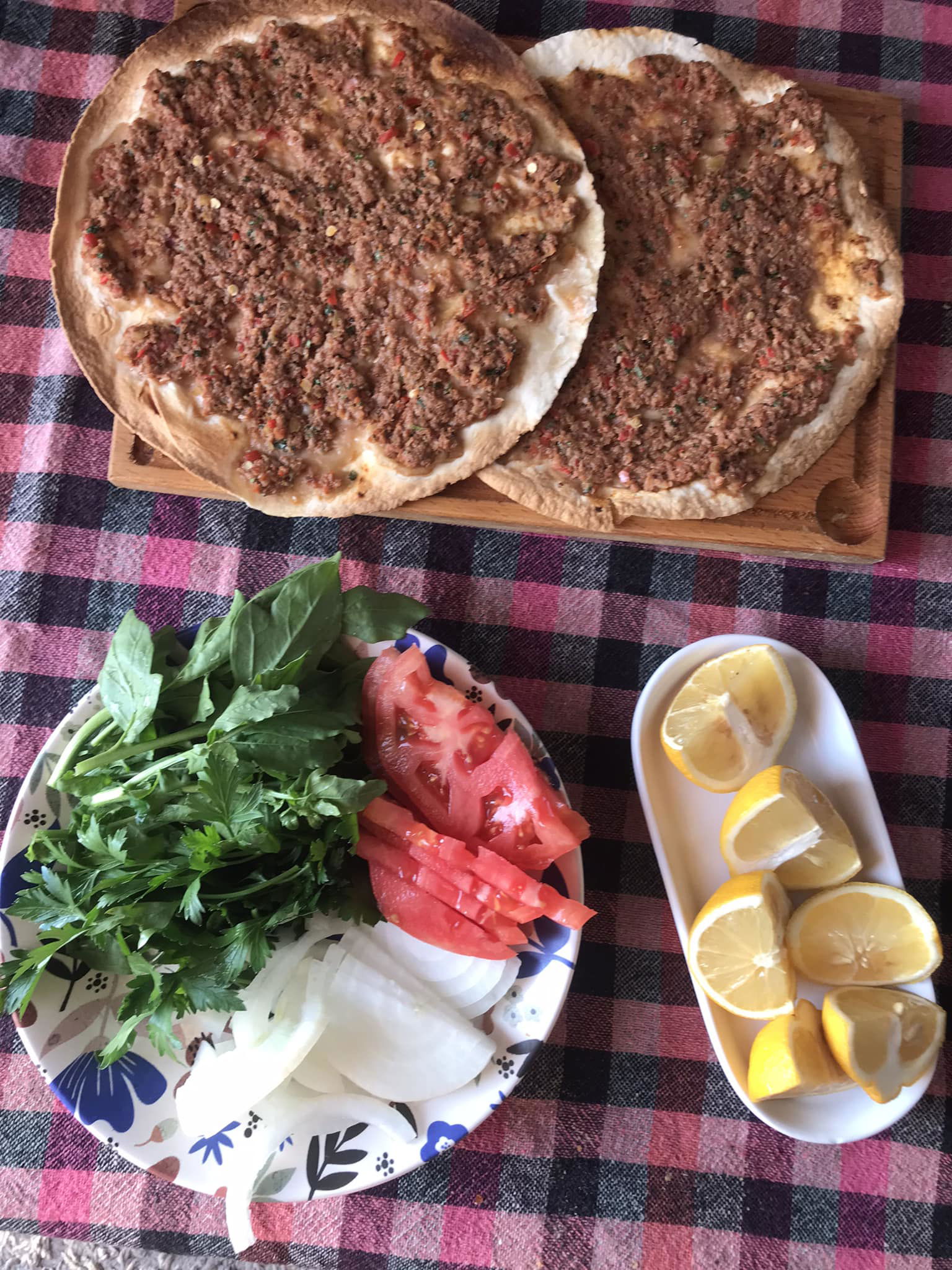
While lahmacun is common throughout Turkey, the version from Diyarbakir has its own unique twist. This thin, crispy flatbread is topped with a spiced mix of minced meat, vegetables, and herbs and is often served with fresh parsley and a squeeze of lemon. It’s the perfect dish for a quick bite!
Kadayif
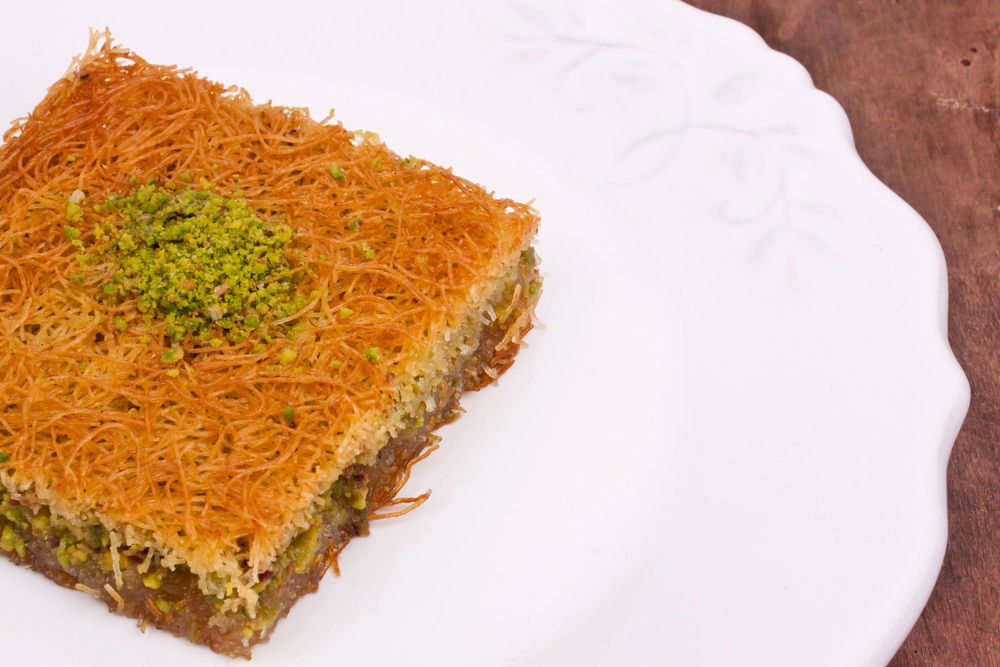
Don’t miss out on dessert! Kadayif is a traditional sweet made from shredded pastry soaked in syrup and often layered with nuts. The crunchy layers combined with the sweet syrup create a delightful indulgence that’s perfect for dessert.
How To Get To Diyarbakir
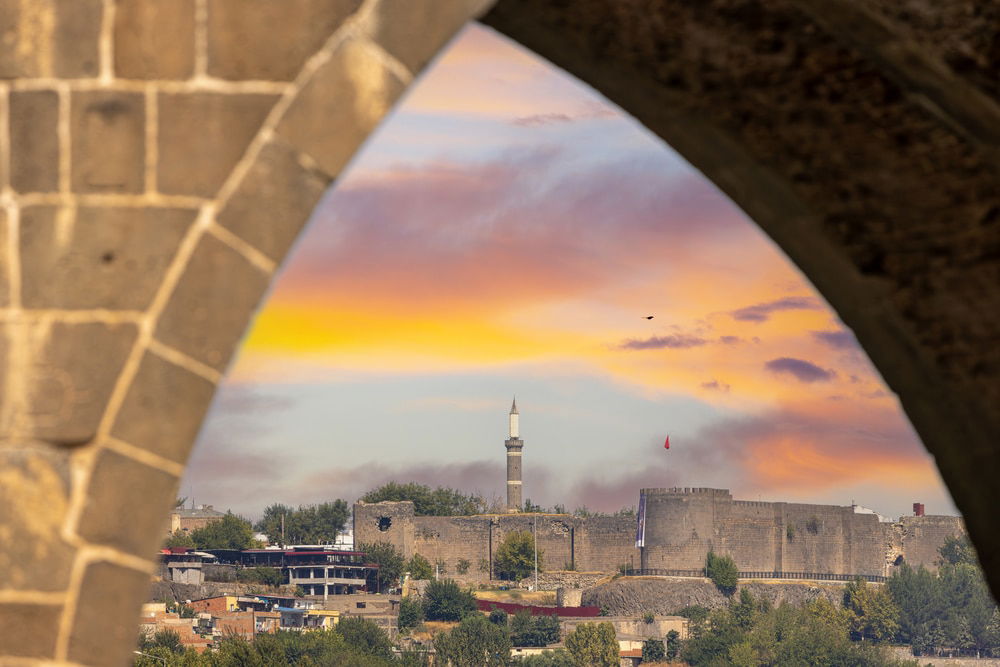
Here’s how to reach this fascinating city, with specific options from the major cities of Mardin, Istanbul and Sanliurfa:
By Air
The quickest way to get to Diyarbakir is by flying. Diyarbakir Airport (DIY) is well-connected with several major cities in Turkey, including Istanbul, Ankara, and Izmir. Once you arrive at the airport, you can take a taxi or a shuttle bus to the city center, which is about 10 kilometers away.
From Istanbul To Diyarbakir By Plane
The quickest and most convenient way to travel from Istanbul to Diyarbakir is by plane. Turkish Airlines, Pegasus Airlines, and AnadoluJet operate multiple daily flights between Istanbul’s airports (Istanbul Airport or Sabiha Gökçen Airport) and Diyarbakir Airport. The flight takes about 1.5 to 2 hours. Once you land, Diyarbakir city center is approximately 10 kilometers away, and you can reach it by taxi or shuttle bus.
By Bus
For a more economical option, long-distance buses operate daily from various cities around Turkey. The bus terminal (Otogar) in Diyarbakir is centrally located, making it convenient to access your hotel or other parts of the city. Companies like Kamil Koç and Metro Turizm offer comfortable services and amenities for travelers.
From Mardin To Diyarbakir By Bus
Several bus companies operate daily routes between Mardin and Diyarbakir. The journey takes about 2 to 2.5 hours. Buses are comfortable and affordable, with tickets available at the Mardin bus station (Otogar). It’s advisable to book tickets in advance, especially during peak travel seasons.
From Istanbul To Diyarbakir By Bus
Long-distance buses are available from Istanbul to Diyarbakir. The journey is lengthy, taking around 18 to 20 hours. Despite the long duration, buses are comfortable, with reclining seats, onboard entertainment, and rest stops along the way. Companies like Metro Turizm and Kamil Koç offer reliable services.
From Urfa (Şanlıurfa) To Diyarbakir By Bus
Buses frequently run between Şanlıurfa and Diyarbakir, and the journey usually takes about 3 to 3.5 hours. You can catch a bus from the Şanlıurfa bus station, where several reputable companies offer services. The buses are generally modern and equipped with amenities.
By Car
If you prefer driving, renting a car is a great option. The road network in Turkey is generally good, and you can enjoy the picturesque landscapes. Be sure to familiarize yourself with local driving regulations and road signs.
From Mardin To Diyarbakir By Car
The most convenient way to travel from Mardin to Diyarbakir is by car. The distance is approximately 90 kilometers (56 miles), and the journey takes around 1.5 hours. The drive is straightforward, following the D955 and D360 highways. Renting a car is a good option if you prefer flexibility in your travel plans.
From Istanbul To Diyarbakir By Car
Driving from Istanbul to Diyarbakir is another option. It covers around 1,300 kilometers (about 810 miles) and takes about 15 to 17 hours without stops. The route primarily follows the O-4 and D200 highways. If you enjoy road trips and want to explore different parts of Turkey along the way, this could be a rewarding option. However, be prepared for a long drive and plan for overnight stops.
From Urfa (Şanlıurfa) To Diyarbakir By Car
The distance from Şanlıurfa to Diyarbakir is approximately 180 kilometers (112 miles), and it takes around 2.5 to 3 hours to drive. The route follows the D885 highway, offering a scenic drive through the southeastern Turkish countryside.
By Train
While there is limited train service directly to Diyarbakir, you can take a train to nearby cities like Elazığ or Malatya and then continue your journey by bus or taxi. Although it is more time-consuming, this route can be a scenic way to experience the region.
Local Transportation
Once in Diyarbakir, local transportation options include city buses, dolmuş (shared taxis), and taxis, all of which are convenient for getting around the city and exploring its historic sites.
When Is The Best Time To Visit Diyarbakir
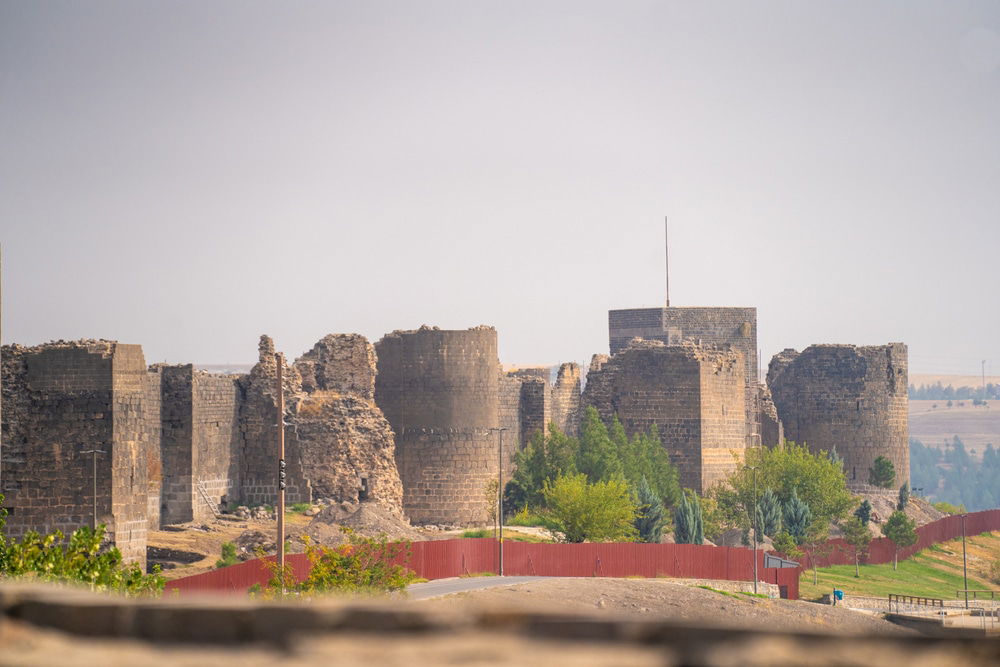
The ideal time to explore this cultural city generally falls between spring (April to June) and autumn (September to November).
Spring (April to June)
This season is particularly appealing because the weather is pleasantly warm, typically ranging from 15°C to 30°C (59°F to 86°F). The blooming flowers and lush greenery create a picturesque backdrop, making it perfect for sightseeing. You can wander through the ancient city walls, explore the stunning Ulu Mosque, and enjoy the lively markets without the sweltering heat of summer.
Autumn (September to November)
Another excellent time to visit, autumn offers similar temperate weather, making it comfortable for outdoor activities. The cultural activities often ramp up during this period, with local festivals and events celebrating traditional music, crafts, and cuisine. This is also a great time to savor the seasonal dishes that Diyarbakir is famous for.
Summer (July to August)
While summer can be quite hot, with temperatures often exceeding 35°C (95°F), it can still be an excellent time to experience the city if you enjoy a vibrant atmosphere. Many locals take to the parks and public spaces during the cooler evenings, and you’ll have the chance to see Diyarbakir in its lively, youthful light. Just be sure to stay hydrated and plan outdoor activities for the cooler parts of the day!
Winter (December to March)
If you don’t mind colder temperatures, winter can also be a delightful time to visit. This is the off-peak season when you’ll encounter fewer tourists, allowing for a more intimate exploration of the city. The vibe is cozy, and you can warm up with traditional coffee or tea while enjoying the local culture. However, it does get quite cold at this time, and there is a chance of snow.


